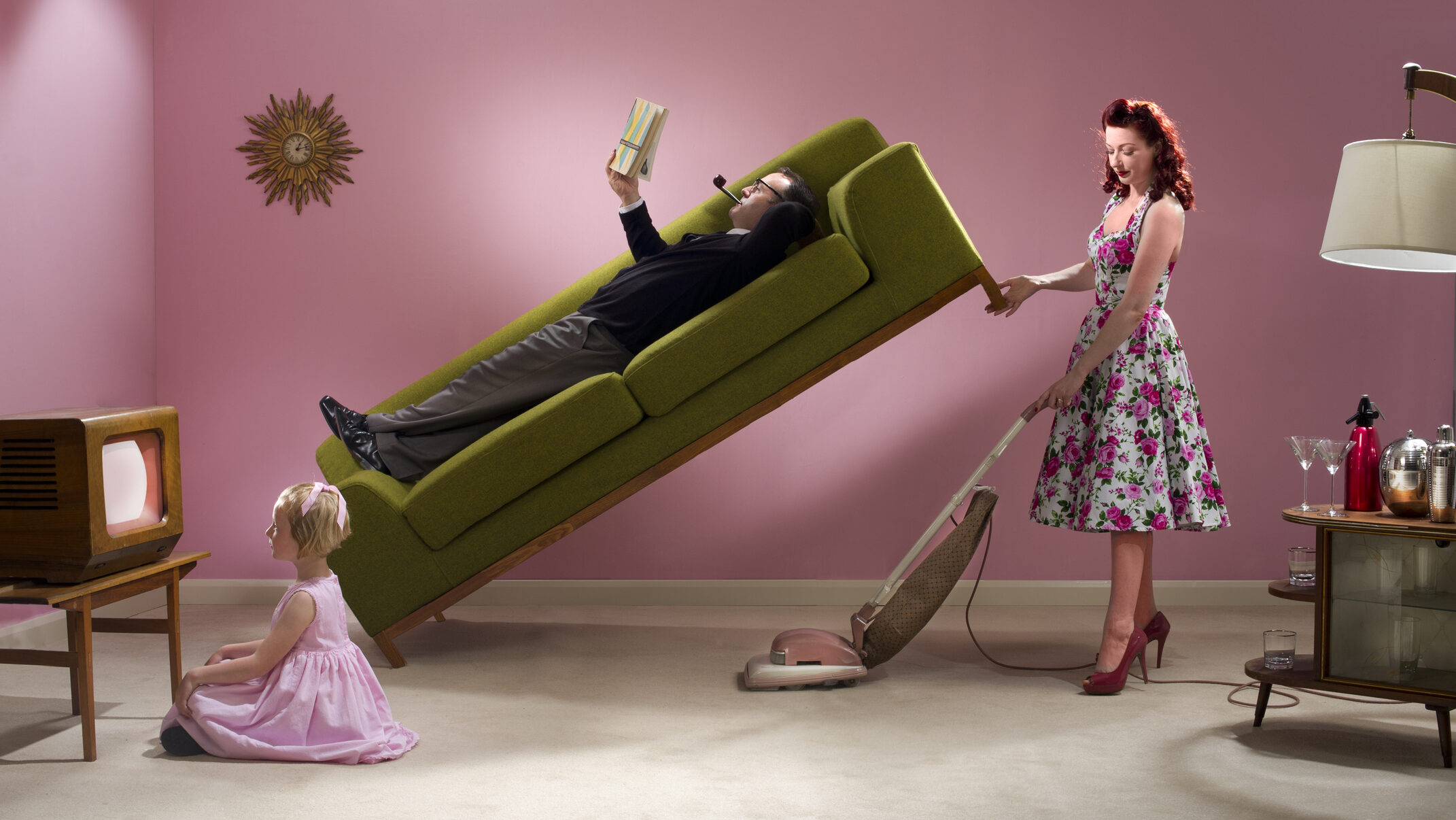The ‘trad wife’ trend—women embracing traditional homemaker roles—has recently resurged on social media. But how does adhering to these age-old gender norms influence intimacy between partners?
According to “Right or Obligations: The Extent to Which Sexual Desire and Gender Roles Determine Sexual Intimacy in Romantic Relationships,” traditional gender roles play a significant part in shaping sexual desire and intimacy within romantic relationships. For couples in these traditional roles, men’s sexual desires tend to become the determining factor in the initiation of sexual activities while the women often see sex as a chore or obligation.
If traditions dictate our desires, what happens when we challenge these norms?
Sexual Desire & Traditional Gender Roles
Sexual desire, often referred to as sex drive, need for sex, or sexual motivation, is influenced by a variety of biopsychosocial factors. For example, hormonal differences in testosterone levels may play a role, potentially explaining why men tend to have a higher sexual desire than women.
Traditional gender roles—where men are seen as providers and decision-makers and women as caretakers—can also heavily influence sexual dynamics in romantic relationships. These roles expect men to take the lead in initiating sex, while women are expected to be more passive.
Enter the Heternormativity Theory of Low Sexual Desire in Women Partnered with Men. This theory suggests that societal expectations around gender and sexuality further play a significant role in why many women experience low sexual desire. Women’s sexual desire may be impacted by, for instance:

Unequal division of labor: Women often handle more household chores and emotional support roles, which may lead to stress and then, diminish their sexual desire.
Partner as a mother: When women feel like they’re mothering their partner, their sexual attraction may dwindle.
Objectification: Women who feel objectified in their relationships often find their sex drive decreasing.
To put it simply, while hormones play an important part, “Cultural norms and gender dynamics can influence sexual desire and behavior beyond biological factors.”
Studying Sexual Intimacy in Romantic Relationships
To dive deeper into such dynamics, Sex Therapist Ateret Gewirtz and colleagues recruited 675 participants in Israel through social media platforms between June 1 and August 25, 2022. The anonymous survey included individuals in intimate relationships for at least the last 12 months.
Participant Demographics
- Gender: 55% women and 45% men
- Religion: Jewish (73.9%); Muslim (14.5%); Druze (7.6%); Christian (2.7%); Other (1.3%)
- Age: 25 to 50 years old
- Relationship Status: Married (79.3%); Unmarried and living together (14.7%); Living separately (6.1%)
- Average Relationship Length: 11.35 years
The survey, available in Hebrew and Arabic, included sociodemographic questions and scales to measure traditional gender roles, sexual desire, perceived partner’s sexual desire, and frequency of sexual activities. Participants were asked questions such as: In the past year…
- “…, how strong was your sexual desire to be with your intimate partner?”
- “…, how strong was your partner’s sexual desire to be intimate with you?”
- “…, how often did you and your partner engage in sex?”
Studying a Diverse Group
By studying this diverse group, the researchers could better understand how traditional norms impact sexual behavior across different cultures. The varied religious and cultural backgrounds provide insights into how societal expectations shape sexual dynamics in both conservative and more liberal contexts.
What Did the Researchers Find?
Higher Sexual Desire in Men
As with previous research, the study found that “men report higher levels of sexual desire and frequency of sexual relations compared to women.” Specifically, men’s average sexual desire was 2.18/3, compared to women’s 1.90/3.
Similar Desires
Men who did not strictly follow traditional gender roles “showed greater alignment between their sexual desires and their perceived partner’s desires.” Which led them to have more “mutually satisfying sexual relationships.” On the other hand, men who strongly followed these traditional roles did not regularly match their partner’s desire for sex.
Traditional Roles
Participants following traditional gender roles reported lower levels of sexual desire and attraction to their partners. However, they engaged in sexual activity more frequently than couples who didn’t follow a traditional dynamic.
Partner Influence
The study showed a significant gender difference in how a perceived partner’s need for sex affects sexual frequency. For women, their frequency of sexual activity “is more influenced by their partner’s perceived desire than their own.”
Religious and Cultural Beliefs
The researchers found that religious and cultural beliefs impacted sexual behavior perceptions of desire. Traditional gender roles were especially prominent in religious communities. Additionally, “Participants from more conservative religious backgrounds showed lower levels of desire but engaged in sex more often due to a sense of duty.”

Challenging Traditional Gender Roles
The researchers emphasize the importance of challenging traditional gender roles to promote healthier sexual relationships. These traditional relationships often place men as the initiators and women as the passive participants, which can limit genuine sexual desire and satisfaction. Couples should challenge these norms by inviting both partners to express and initiate sexual activities. Further, both partners should feel free to decline sex without the fear of negative consequences.
Couples should strive for equal distribution of responsibilities and decision-making power within the relationship. This can reduce feelings of inequity and increase sexual satisfaction. Additionally, couples should communicate openly about their sexual needs, boundaries, and mutual consent. This can help both partners feel heard and valued.

How Can Therapy Help?
According to the researchers, therapists should promote shared decision-making in sexual experiences, which helps balance the power dynamics in relationships. For individuals, especially women, who strongly support traditional gender roles, therapy should address the feelings of sex being an obligation to meet their partner’s needs. This approach aims to change the view of sexual activity from a chore to a mutually pleasurable experience.
Furthermore, therapists can assist women in exploring their sexual desires, sharing their preferences, and negotiating sexual encounters based on mutual consent and personal needs. The principle of consent is important to teach, so women know they can choose and decline sexual activity based on their wants and needs.
The Future of Relationships
The researchers recommend future studies to use daily diaries for more insights into sexual behaviors and desires in real-life contexts. Additionally, exploring the experiences of both partners through qualitative interviews could give a deeper understanding of how cultural and religious beliefs shape sexual dynamics.
As the ‘trad wife’ trend continues on social media, this research sheds light on the impact of these idealistic traditional gender roles. These roles may increase the amount of sex couples have, but ultimately it lowers their sexual desires, especially for women who may view sex as another household chore.
By challenging these traditional gender roles and promoting consent and communication, couples can have healthier, more satisfying relationships.




